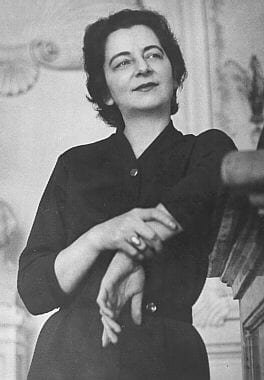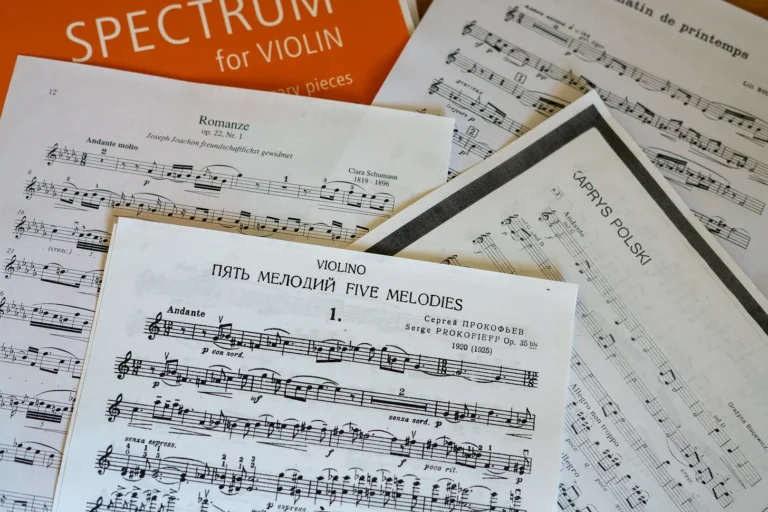Discovering Grażyna Bacewicz: Accessible Violin Music by a Modern Polish Composer
A brilliant 20th-century voice rooted in Polish tradition
Grażyna Bacewicz (1909–1969) was a celebrated Polish composer, violinist, and educator whose music is finally gaining the international recognition it deserves. A well-known, yet underrepresented, figure in 20th-century classical music, Bacewicz wrote extensively for the violin, creating works that are filled with character, rewarding to play, and often accessible even for amateur and student violinists.

Born in Łódź and educated in Warsaw and Paris, she studied composition with Nadia Boulanger and violin with André Touret, developing a voice grounded in both Polish folk traditions and French neoclassical style.
From the 1930s to the 1960s, Bacewicz composed a distinctive oeuvre that blends folk influences, formal structure, rhythmic drive, and modernist language. Today, her violin works are increasingly featured in recital programs, chamber festivals, and student competitions.
The first time I heard her music live was in a regional symphony’s performance of her Concerto for String Orchestra. I was immediately drawn to its energy and vibrant textures. Since then, I’ve played several of her violin duets with my teacher and have been eager to explore more, especially her pieces for solo violin and violin and piano.
For violinists looking to explore accessible 20th-century repertoire, especially by women composers, Grażyna Bacewicz offers a great starting point. Below, I highlight several of her violin works that are perfect for intermediate players that are also musically satisfying.
Most Accessible Pieces for Violin by Grażyna Bacewicz
These pieces are ideal for intermediate-level violinists or those new to modern classical music. They offer a perfect introduction to Bacewicz’s distinctive voice that combines lyricism, folk influence, and rhythmic drive with writing that is playable yet never simplistic.
🎶 Easy Pieces for Violin and Piano (1946)
One of Bacewicz’s most widely used educational works, this set is a fantastic entry point into 20th-century violin music.
Accessibility: Late beginner to intermediate level. Features clean rhythms, tonal harmonies, and idiomatic writing for both violin and piano.
⭐ Recommended as a first piece for students unfamiliar with 20th-century repertoire. A rare example of modern violin music that is approachable for younger or less experienced players.
🎶 Easy Duets on Folk Themes (1945)
Originally written for teaching, these short violin duets are based on traditional Polish folk melodies. They are musically engaging and great for building ensemble skills.
Accessibility: Late beginner to early intermediate. Technically manageable with opportunities for working on expressive phrasing.
⭐ A fun introduction to chamber music and Polish folk influence in classical violin writing.
Concertino for Violin and Piano (1945)
This neoclassical piece is an excellent recital choice for students exploring 20th-century violin repertoire.
Accessibility: Intermediate level. Requires basic shifting and offers some opportunities to work on fast passages.
⭐ A piece that is full of character and energy without being technically overwhelming.
Melodia for Violin and Piano (1946)
A lyrical, subtly modern, Romantic-style miniature. This piece is filled with opportunities for tone development and working on expressive phrasing.
Accessibility: Early to mid-intermediate. Emotionally expressive.
⭐ Perfect for students developing musical expression through accessible modern music.
Suite for Two Violins (1943)
This contrapuntal, rhythmically lively, folk-influenced duet is musically rewarding. It blends neoclassical form with traditional Polish idioms.
Accessibility: Intermediate. Both parts offer melodic and rhythmic challenges.
⭐ A rewarding chamber work for violin students seeking collaborative repertoire with character and substance.
Polish Capriccio for Solo Violin (1949)
A short, virtuosic showpiece filled with Polish folk flavor. Frequently performed in competitions.
Accessibility: Intermediate to early advanced. Technically engaging but not excessively demanding.
⭐ A compelling solo work that introduces players to Bacewicz’s folk-inspired writing.
Sonata da camera for Violin and Piano (1945)
This sonata blends neoclassical structure with Polish folk motifs, resulting in a rhythmically vibrant chamber work.
Accessibility: Intermediate to early advanced. More accessible than Bacewicz’s later sonatas, but still musically rich.
⭐ A great option for those looking to deepen their experience with 20th-century chamber repertoire without stepping into highly virtuosic territory.
Violin Sonata No. 3 (1948)
This lyrical sonata introduces Bacewicz’s mature compositional voice while still maintaining the clarity and elegance of her earlier neoclassical works.
Accessibility: Late intermediate to early advanced. A good next step after exploring her earlier works.
⭐ An excellent bridge to more advanced modern sonatas.
Final Thoughts
Grażyna Bacewicz’s violin music is full of personality and rhythmic vitality. For amateur and intermediate violinists seeking approachable 20th-century violin repertoire, or looking to expand beyond the standard canon, her works offer a great blend of technical accessibility and musical sophistication. These works are perfect for lessons, chamber music sessions, informal, and formal performances.
📚 Looking for more accessible modern violin repertoire?
👉Check out my Adult Student’s Guide to Inspiring Repertoire.

